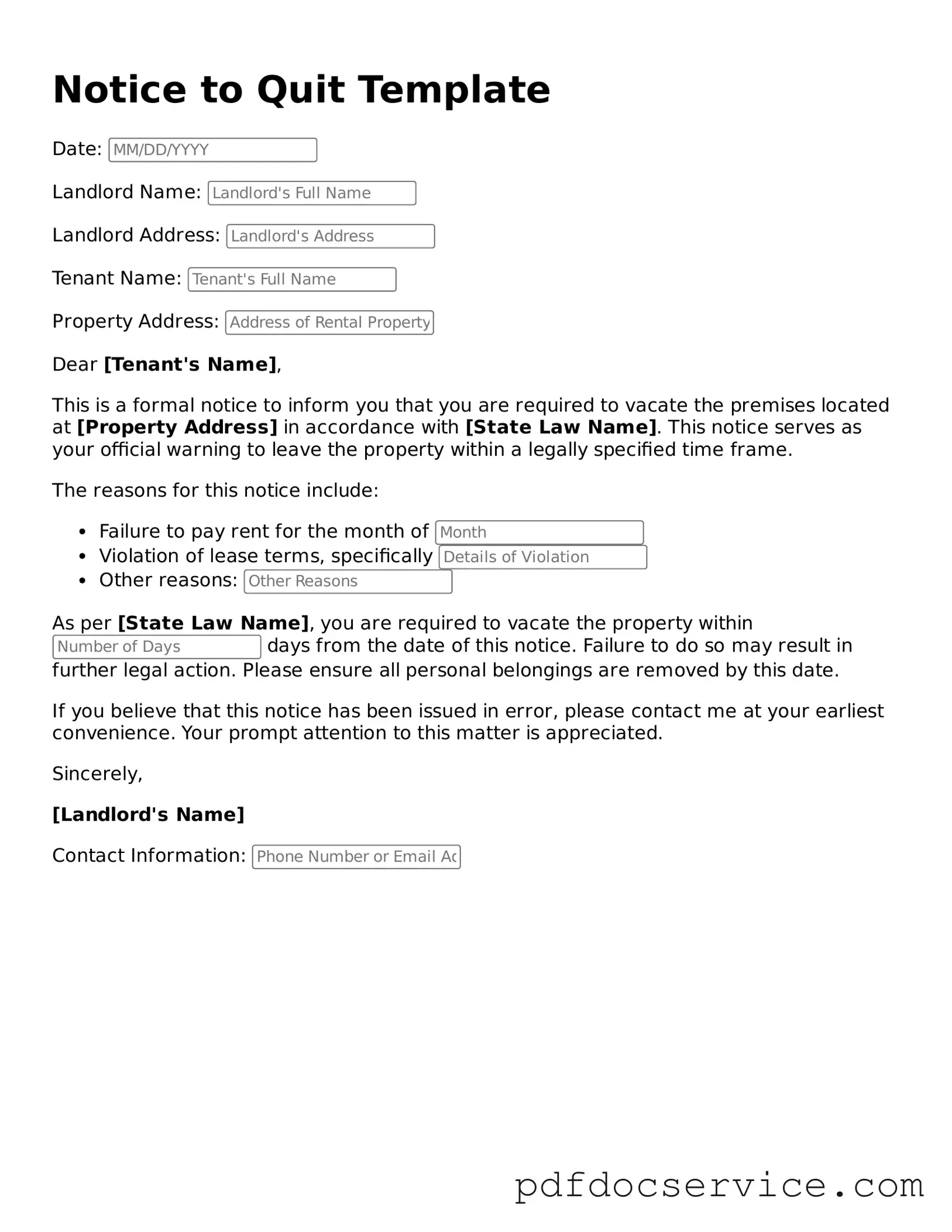Blank Notice to Quit Form
The Notice to Quit form is a legal document that a landlord uses to inform a tenant of the intention to terminate their lease or rental agreement. This notice serves as a formal request for the tenant to vacate the property within a specified timeframe. Understanding the implications of this form is crucial for both landlords and tenants to navigate the rental process effectively.
Open Notice to Quit Editor
